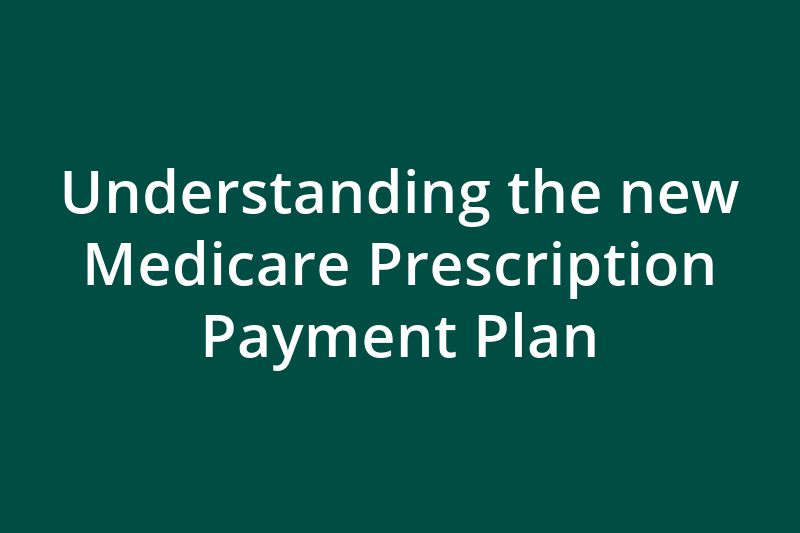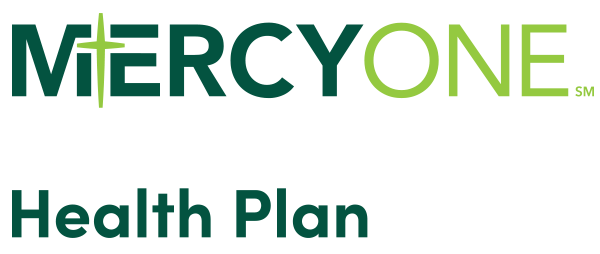Financial Assistance Options
Need a little help? Managing your health care costs can be easier with Medicare’s financial assistance programs. These options help make coverage more affordable so you can focus on what matters most—your health and peace of mind.
Extra Help
The Extra Help program, also called the Part D Low-Income Subsidy, offers assistance covering the costs of Medicare prescription drugs, including premiums, deductibles, and copayments.
If you know your Extra Help level, simply refer to the Low-Income Subsidy (LIS) Premium Summary Chart below to see the assistance you’re eligible for.
Medicare Prescription Payment Plan
The Medicare Prescription Payment Plan, created under the Inflation Reduction Act, offers a new way to help you manage your prescription drug costs by spreading them across the plan year (January–December). Anyone with Medicare Part D prescription drug coverage, including members of MercyOne Health Plan, will be able to use this option. Participation in the program is voluntary and there is no cost to participate.
Watch the video below for an overview of the Medicare Prescription Payment Plan.

Medicare Prescription Payment Plan FAQs
Any beneficiary with Medicare Part D coverage, including those who receive Extra Help from Medicare, can participate in the Medicare Prescription Payment Plan.
If you opt in to the program, you will pay $0 at the pharmacy (including mail order and specialty pharmacies) when filling a prescription for plan-covered Part D drugs. MercyOne Health Plan will then bill you monthly for the cost of your prescription(s).
No, you will pay the same amount for your prescription drugs. The program simply allows you to spread those costs over the course of the plan year, making them more manageable.
If you’re looking for ways to lower your costs, the Medicare Savings Programs and Medicare’s Part D Low Income Subsidy (LIS), also known as "Extra Help," are great options for those who qualify based on income and resources. If you qualify for LIS, you will likely find that it is more advantageous than participating in the Medicare Prescription Payment Plan.
We encourage you to check your eligibility for these programs before deciding if the Medicare Prescription Payment Plan is the best option for you. Medicare recently expanded its eligibility requirements for LIS, so you may qualify for 2025 even if you didn't before.
We use a simple formula to calculate your monthly bill. First, we take the total cost of your prescriptions that you would have paid at the pharmacy that month, add it to your previous month's balance (if applicable), then divide the total by the number of months left in the plan year.
Keep in mind that the amount you owe each month could change throughout the year. As you fill new prescriptions or refill existing ones, those out-of-pocket costs will be added to your total amount owed. And because there are fewer months left in year plan year to spread out those remaining payments, your monthly payment may need to change to ensure you are on track to pay off the entire amount owed before the end of the plan year.
The Centers for Medicare and Medicaid Services has put together three example scenarios to show you how monthly payments are calculated. You can access those here: https://www.medicare.gov/prescription-payment-plan/examples.
What's important to remember is that, in a single plan year (January–December):
- You will never pay more than the total amount you would have paid out of pocket at the pharmacy if you weren't participating in the program. There are no fees or interest charged under the program.
- Your costs will never exceed the maximum out-of-pocket spend for prescription drugs. In 2025, the maximum out-of-pocket spend is $2,000.
Every member's situation is different. It's important to remember that the Medicare Prescription Payment Plan does not save you money or lower your drug costs, it only helps you manage those costs by breaking them up into smaller, monthly payments made over the course of the plan year.
The flexibility the program provides is most likely to benefit you if you face high drug costs early in the year. You can start participating in the program at any time in the year — just keep in mind that the later you start, the fewer months you will have to pay off your balance. Your balance must be paid in total by the end of the plan year.
The Medicare Prescription Payment Plan may not be the best choice for you if:
- Your annual drug costs are low
- Your drug costs are consistent, meaning they don't change much from month to month
- You receive or are eligible for financial assistance through Extra Help or a Medicare Savings Program
- You get help paying for your prescription drugs from other organizations
- You are considering signing up for the program late in the plan year (after September)
- You don't want to change how you pay for your prescriptions
If you aren't sure if the Medicare Prescription Payment Program is a good fit for you, Medicare has created a brief questionnaire that can help you determine whether you are likely to benefit from the program. You can find that here: https://www.medicare.gov/prescription-payment-plan/will-this-help-me.
You can also contact the Senior Health Insurance Information Program (SHIIP) for free, personalized health insurance counseling.
Call: 1-800-351-4664
TTY: 1-800-735-2942
Email: shiip@iid.iowa.gov
https://shiip.iowa.gov/
Members who want to participate in the program for 2025 can opt in by completing the Medicare Prescription Payment Plan enrollment form on the CVS Caremark website at www.caremark.com/mppp.
Please note: You will need a Caremark account to complete the form. If you have an account on the MercyOne Health Plan Member Portal, you can click the Caremark link in the Drug Benefits section of the portal to access Caremark via single sign-on.
Requests to participate in the Medicare Prescription Payment Plan made before the 2025 plan year begins will be processed within 10 days, and your participation in the program will begin Jan. 1, 2025.
Requests received during the 2025 plan year will be handled within 24 hours, and your participation in the program will begin immediately after that.
If you are unable to pay your monthly bill, you will be given a two-month grace period to make up missed payments. If you still have not made your payments after that two-month period, you will be removed from the Medicare Prescription Payment Plan. At that time, you will pay any new out-of-pocket costs for your prescription drugs will be paid directly at the pharmacy.
You will still be required to pay any outstanding balance you owe from your time in the program. We will continue to send you monthly bills until your balance is paid in full. Or, if you prefer, you can pay off your remaining balance all at once via a lump sum payment.
Being removed from the Medicare Prescription Payment Plan will not impact your enrollment status with MercyOne Health Plan. You will still be enrolled in your Medicare Advantage plan.
If your plan has a monthly premium, and you are concerned about making your premium payment and your Medicare Prescription Payment Plan bill, always pay your monthly plan premium first so you don't risk losing your drug coverage.
Yes, you can opt out of the program at any time during the plan year. To end your participation in the program, complete the Medicare Prescription Payment Plan disenrollment form on the CVS Caremark website at www.caremark.com/mppp.
Please note: You will need a Caremark account to complete the form. If you have an account on the MercyOne Health Plan Member Portal, you can click the Caremark link in the Drug Benefits section of the portal to access Caremark via single sign-on.
Once you opt out of the program, any new out-of-pocket costs for your prescription drugs will be paid directly at the pharmacy.
You are still responsible for paying your outstanding balance from your time in the program, and MercyOne Health Plan will continue to send monthly bills until your balance is paid in full. Or, if you prefer, you can pay off your remaining balance all at once via a lump sum payment.
We have partnered with CVS Caremark to help manage the Medicare Prescription Payment Program for MercyOne Health Plan members. If you have any questions about the program, please contact CVS Caremark at 1-866-785-5714, Option 2 (TTY: 711). Representatives are available 24 hours a day, seven days a week to assist you.
Learn more about the Medicare Prescription Payment Program:
Medicare Savings Programs
Eligible members can get help paying for Medicare premiums, deductibles, coinsurance and copays through a Medicare Savings Program. Some of the available programs include:
- Qualified Medicare Beneficiary (QMB): Helps pay for Part A and Part B premiums and other cost-sharing.
- Specified Low-Income Medicare Beneficiary (SLMB): Helps pay for Part B premiums.
- Qualifying Individual (QI): Helps pay for Part B premiums.
- Qualified Disabled & Working Individuals (QDWI): Helps pay for Part A premiums
Curious about what programs you qualify for? Contact Medicare’s 24/7 helpline at 1-800-MEDICARE or visit our Billing Support and Resources page for additional resources.
